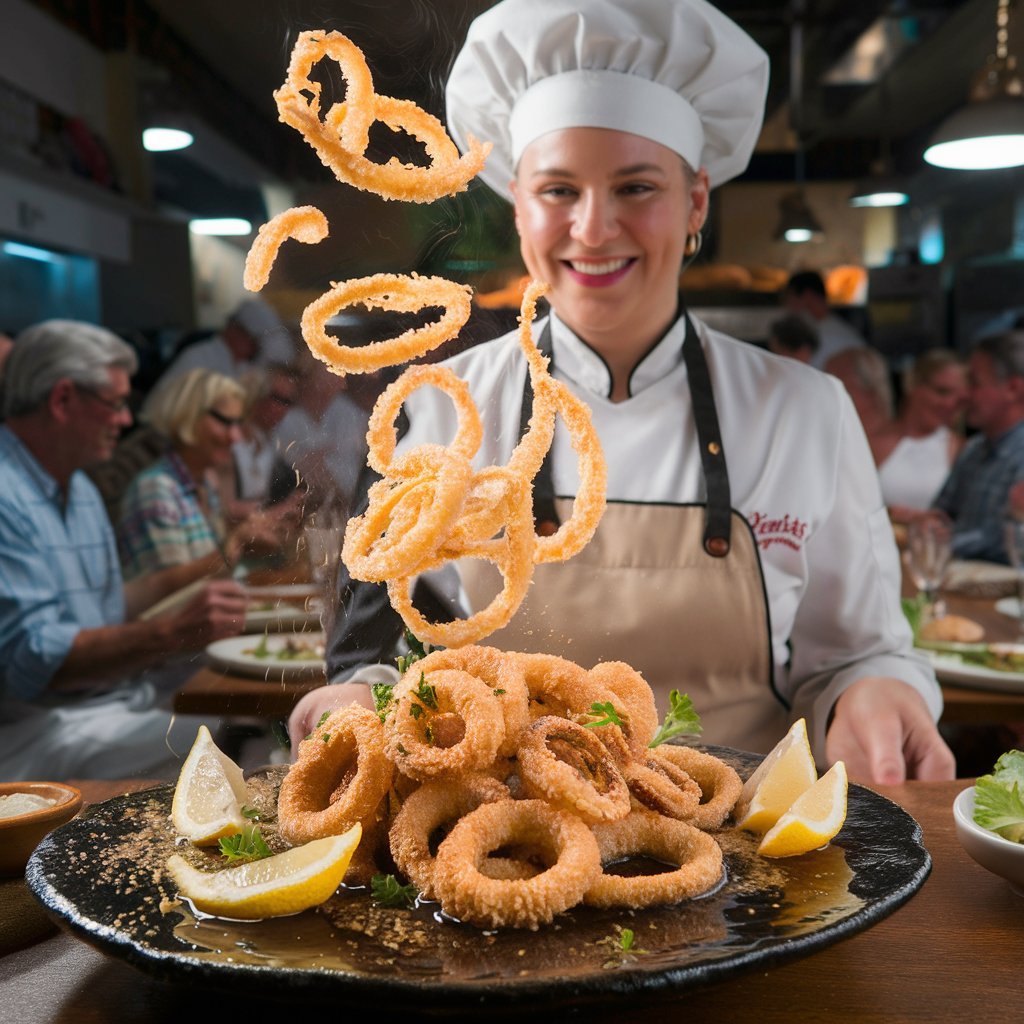Calamariere: The Art and Tradition of Squid Fishing

A calamariere is a traditional fishing device specifically designed for catching squid, commonly used in Mediterranean coastal regions, particularly in Italy. These structures, often made of wood or metal, attract squid with artificial light and trap them in nets or cages. Squid fishing with calamariere is not only an important economic activity but also a cultural tradition passed down through generations. This article explores the history, design, techniques, and ecological impact of calamariere, as well as their role in modern fishing practices.
1. The History and Origins of Calamariere
The use of calamariere dates back centuries, with early versions consisting of simple wooden frames and woven nets. Mediterranean fishermen discovered that squid are highly attracted to light, leading to the development of illuminated fishing traps. Over time, these structures evolved into more sophisticated designs, incorporating lanterns or LED lights to increase catch efficiency. In regions like Sicily and Calabria, calamariere have become an integral part of local fishing traditions, often built and maintained by families who specialize in squid fishing. Historical records and oral traditions highlight how these devices have shaped coastal economies and culinary practices, as squid remains a staple in Mediterranean cuisine.
2. Design and Functioning of a Calamariere
A traditional calamariere consists of a submerged framework, usually anchored to the seabed, with suspended nets or cages. The key feature is an artificial light source, which lures squid toward the trap during nighttime fishing. Modern versions may use battery-powered LED lights for better efficiency and durability. Once the squid are drawn in by the light, they become entangled in the nets or enter funnel-shaped traps that prevent escape. Some designs include multiple chambers to increase the catch capacity. The materials have also evolved—while older calamariere were made of wood and rope, contemporary ones often use corrosion-resistant metals and synthetic fibers for longevity.
3. Fishing Techniques and Seasonal Practices
Squid fishing with calamariere is primarily a nocturnal activity, as squid are more active and responsive to light at night. Fishermen deploy these traps in shallow coastal waters, usually at depths of 10 to 50 meters, where squid populations thrive. The best seasons for squid fishing vary by region but often peak in spring and autumn when squid migrate closer to shore for spawning. Experienced fishermen monitor lunar phases and water temperatures to optimize their catches. Unlike large-scale industrial fishing, calamariere allow for selective harvesting, reducing bycatch and promoting sustainable practices.
4. Ecological Impact and Sustainability
While calamariere are generally considered more sustainable than trawling or drift nets, they still pose some ecological concerns. Overfishing in certain areas has led to declining squid populations, prompting regulations on the number and placement of traps. Light pollution from calamariere can also disrupt marine ecosystems, affecting other species sensitive to artificial illumination. However, when used responsibly, these traditional methods have a lower environmental footprint compared to industrial fishing. Some coastal communities have implemented seasonal bans and size limits to ensure squid populations remain stable, balancing economic needs with conservation efforts.
5. Cultural Significance and Modern Adaptations
Beyond their economic value, calamariere hold cultural importance in Mediterranean fishing villages. Festivals and local events often celebrate the squid harvest, featuring traditional recipes like fried calamari, stuffed squid, and seafood pasta. In recent years, some fishermen have combined traditional calamariere with eco-tourism, offering visitors the chance to participate in night fishing expeditions. Meanwhile, technological advancements have introduced solar-powered lights and GPS-tracked traps, making the practice more efficient while preserving its heritage. Despite competition from large-scale fisheries, many small-scale fishermen continue to rely on calamariere, keeping this ancient tradition alive.
Conclusion
The calamariere represents a fascinating blend of tradition, innovation, and sustainable fishing. From its historical roots in Mediterranean coastal communities to its modern adaptations, this method of squid fishing demonstrates how age-old practices can coexist with contemporary environmental awareness. While challenges such as overfishing and ecological disruption persist, responsible management ensures that calamariere remain a viable and culturally significant fishing technique. Whether for livelihood, tradition, or gastronomy, the art of squid fishing continues to thrive, connecting past and present in the ever-evolving relationship between humans and the sea.




